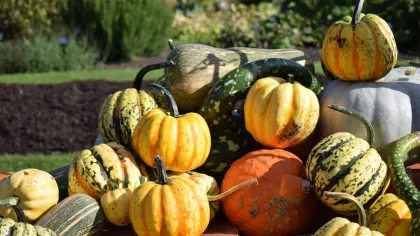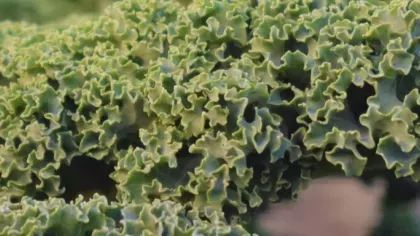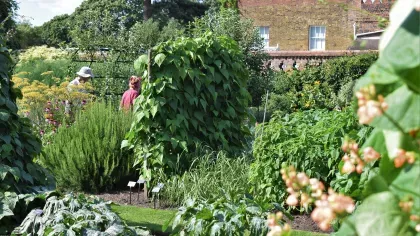18 September 2018
Hot stuff: A spicy treat in an English Kitchen Garden
The heat is on in the Kitchen Garden this September. Botanical Horticulturalist Helena Dove gives us the lowdown about what makes the fiery little chilli so hot.

Where do chilli peppers come from?
The tiny chilli pepper can pack quite the punch. Chances are, you already know what your tongue can take.
Whether in fiery pasta sauce, or a burning curry paste, this spicy plant could not be more of a stranger to the traditional English dinner plate. But yet, across the years, we’ve come to yearn for a little bit of a kick to our food.
Chilli peppers belong to the nightshade family, Solanaceae, which means they’re ‘cousins’ of the calmer tastes of tomatoes, potatoes and aubergines.
They originated in Central and South America, and there’s evidence that they were first cultivated as a crop around 3000BC- making it an ancient plant
Thanks to Christopher Columbus’ travels to America, they were part of many crops that came to Europe. Unsparingly, they weren’t immediately embraced as our conservative European palates weren’t accustomed to hot flavours.

What makes chilli peppers hot?
They contain alkaloids called capsaicin, and it’s that chemical which makes them hot.
This is an irritant to humans and other mammals, and can be blamed for the burning mouth after a curry.
This means they can make fantastic pest control. Farmers in Zambia and other African countries have been known to grow chilli plants around their crops to protect them from hungry elephants.
Measuring the heat
The heat of a pepper can be measured against a scale, called the Scoville Scale, which measures the concentration of capsaicin.
A bell pepper has a rating of 0 – 100 Scoville Heat Units, whereas a scotch bonnet has a rating of 100,000 - 350,000! Eating scotch bonnets can lead to intense burning in the mouth, inflamed hands, sweating and heartburn.
At Kew, the hottest pepper we grow is the cheyenne pepper , which is around 30,000 – 50,000 Scoville Heat Units.
Incredibly, the scotch bonnet isn’t the hottest. The current hottest peppers in the world have ratings of 800,000 to 3,200,000 Scoville Heat Units.
This includes a chilli called dragon’s breath, which was grown by Nottingham Trent University as part of their efforts to develop capsaicin as a natural anesthetic – and definitely not for eating.

Can we grow chilli peppers in the British climate?
The key to good chilli plants is to sow them indoors, as they need warm conditions to germinate and grow.
At Kew, I start sowing them indoors in February on a heat mat which keeps them snug and warm. They need a constant temperature of 21°C to germinate, which usually takes a few weeks.
They’re then put into modules and kept at 16-18°C in the lightest spot I can find, and once their roots start showing we transfer them to pots.
Once all chance of frost has passed, we move them outside (usually late May or June). A late frost will kill them, so it’s important to be cautious and not rush them outdoors.
Chili peppers will produce many fruits depending on the species - some produce around 20 per plant.
They keep ripening all the way until early October if the temperature and light levels stay high.
Chilli peppers also grow really well indoors during summer, especially if you live in a colder part of the UK.
Chilli pepper facts
- Birds don’t have the same reaction to capsaicin, and can eat them with no burning effects. So, they have no problems spreading chilli pepper seeds in the wild- making them the main vehicle for distribution.
- Chillis are edible in all stages of ripeness, but the longer they stay on the plant, the hotter they get.
- Good rule of thumb; the smaller the chilli, the hotter it is.
- There are over 500 varieties of chilli and sweet pepper plants.
- A plant will produce more capsaicin when it’s stressed - so if you want to grow super hot chillies, don’t overwater or treat your crops too well.
Visit the Kitchen Garden to see our fabulous chilli plants for yourself.


